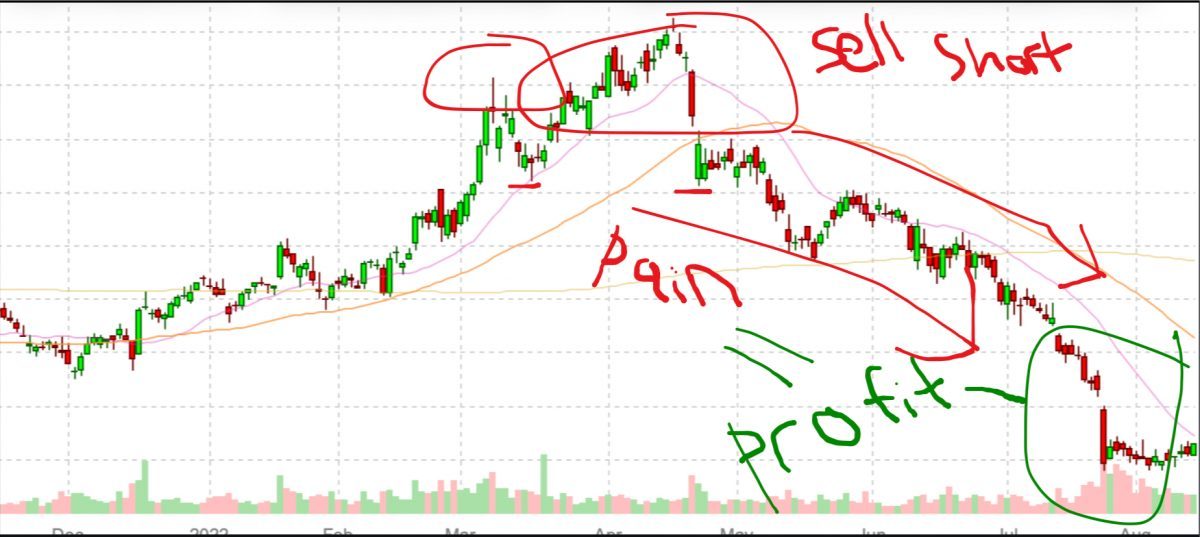Investing is often perceived as a rational and objective endeavor. However, the reality is that emotions play a significant role in shaping our investment decisions. Understanding the psychology behind investing is important, as it can help you to make informed choices and effectively manage your portfolio. Today, we dive into the fascinating world of the psychology of investing and explore how emotions and decision-making processes intersect.
Emotions and Biases:
Emotions such as fear, greed, and euphoria can strongly influence investment decisions. These emotions give rise to cognitive biases that can cloud judgment and lead to suboptimal outcomes. Some common biases include loss aversion, confirmation bias, overconfidence, and herding behavior. Recognizing these biases is essential for you to overcome emotional hurdles and make rational decisions. Let’s take a look closer look below at these biases:
Loss Aversion – Loss aversion refers to the tendency for individuals to feel the pain of losses more strongly than the pleasure of gains. It means that people are more motivated to avoid losses than they are to achieve equivalent gains. In the context of investing, loss aversion can have a significant impact on decision-making.
Investors who are influenced by loss aversion may exhibit risk-averse behavior and be more inclined to hold onto losing investments in the hope of recovering their losses. This can lead to a reluctance to sell underperforming assets, even when objective analysis suggests it may be the best course of action. As a result, loss aversion can prevent investors from making rational decisions based on the current value and future prospects of an investment.
Confirmation Bias – Confirmation bias is the tendency for individuals to seek and interpret information in a way that confirms their existing beliefs and opinions while disregarding or downplaying contradictory information. In the context of investing, confirmation bias can lead to a skewed assessment of investment opportunities.
Investors influenced by confirmation bias may actively seek out information that supports their preconceived notions about a particular investment or market outlook. They may ignore or dismiss information that challenges their beliefs, leading to a one-sided analysis of investment opportunities. This bias can prevent investors from considering alternative perspectives and conducting thorough due diligence, potentially leading to biased decision-making and missed opportunities.
Overconfidence – Overconfidence refers to an inflated sense of one’s own abilities and a tendency to overestimate one’s knowledge, skills, and ability to predict future outcomes. In the context of investing, overconfidence can lead investors to take on excessive risk and make suboptimal decisions.
Overconfident investors may believe that they possess superior stock-picking abilities or market timing skills, leading them to engage in active trading or speculative strategies. However, research has consistently shown that overconfident investors often underperform the market average. By overestimating their abilities, investors may fail to properly assess risks and make well-informed investment decisions, ultimately leading to poor performance.
Herding Behavior – Herding behavior refers to the tendency of individuals to imitate the actions of others, particularly in uncertain or ambiguous situations. In the investment world, herding behavior can lead to market trends that are driven more by emotions and social influence than by objective analysis.
When investors engage in herding behavior, they may buy into an investment solely because others are buying, causing prices to rise even when the fundamental value does not justify the increase. Similarly, herding behavior can also lead to panic selling when a significant number of investors start selling based on fear or negative sentiment. As a result, markets can become susceptible to bubbles, crashes, and exaggerated price movements driven by group dynamics rather than rational analysis.
Decision-Making under Uncertainty:
Investing inherently involves dealing with uncertainty and making decisions based on incomplete information. In such situations, individuals often rely on mental shortcuts and biases that can lead to flawed decision-making. Anchoring, availability bias, and the gambler’s fallacy are examples of biases that you should be aware of to avoid making irrational choices. We discuss these concepts in more detail below:
- Anchoring – Anchoring refers to the cognitive bias where individuals rely heavily on the first piece of information (the anchor) they receive when making decisions. In the context of investing, anchoring occurs when investors fixate on a specific reference point, such as the purchase price of a stock, and use it as a basis for evaluating its future performance. For example, suppose an investor purchases a stock at $50 per share. Despite changes in the stock’s fundamental value, the investor may be reluctant to sell if the current price falls below $50 because the initial purchase price serves as a psychological anchor. This bias can prevent investors from objectively reassessing their investments based on new information, potentially leading to missed opportunities or holding onto losing positions for longer than necessary.
- Availability bias – The availability bias is a cognitive bias in which individuals give more weight to information that is readily available to them, particularly information that is easily recalled from memory. In the realm of investing, this bias can lead investors to overemphasize recent or vivid events when making investment decisions. For instance, if investors have recently witnessed a market downturn or a high-profile financial crisis, they may be more inclined to believe that such events are likely to recur. This bias can result in a disproportionate focus on negative news or sensationalized media reports, leading to an overreaction and potentially poor investment decisions.
- Gambler’s fallacy – The gambler’s fallacy is a cognitive bias that occurs when individuals believe that past outcomes in a random process can influence future outcomes. It is the erroneous belief that the occurrence of a particular event becomes less likely or more likely based on past events.
Regret and Prospect Theory
Regret plays a significant role in investment decisions. The fear of regret often leads investors to avoid actions that could potentially result in remorse. Prospect theory suggests that individuals are more averse to losses than they are driven by potential gains, leading to risk-averse behavior.
Framing and Perception
The way investment information is presented or framed can influence decision-making. Different framing of potential gains or losses can evoke different emotional responses, leading to diverse choices. Investors should be cautious of how information is presented and strive to analyze it objectively rather than being swayed solely by emotional reactions.
Overcoming Emotional Biases
To make better investment decisions, it is important to develop strategies to mitigate the influence of emotional biases. Educating yourself about the psychology of investing and being aware of common biases is a good first step. Setting clear investment goals, maintaining a long-term perspective, diversifying investments, and seeking advice from professionals can all help counteract impulsive and emotionally-driven decisions.
Conclusion
The psychology of investing reveals that emotions and decision-making processes are intricately intertwined. By understanding the impact of emotions on investment choices and adopting strategies to overcome biases, you can make more rational and informed decisions. Being aware of your own emotional responses, seeking alternative perspectives, and maintaining a long-term focus are key factors in achieving successful investment outcomes.




